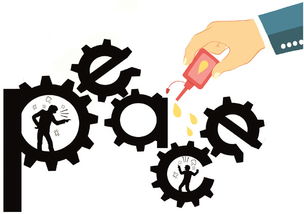How to Make a Money Saving Chart: A Detailed Guide
Creating a money saving chart is a fantastic way to keep track of your finances and ensure that you’re staying on top of your budget. Whether you’re looking to save for a big purchase, pay off debt, or simply get a better handle on your spending, a well-crafted money saving chart can be a powerful tool. In this guide, I’ll walk you through the process of creating a money saving chart that works for you.
Choosing the Right Format

Before you start creating your money saving chart, it’s important to decide on the format that will work best for you. There are several options to choose from, including:
- Spreadsheets: Excel, Google Sheets, and other spreadsheet software offer a lot of flexibility and can be easily customized to fit your needs.
- Printable Charts: You can find a variety of free printable charts online that you can download and fill out by hand.
- Mobile Apps: There are many apps available that can help you track your spending and savings on the go.
Consider your personal preferences and the frequency with which you’ll be updating your chart when choosing the right format.
Setting Your Goals

One of the most important steps in creating a money saving chart is to set clear and achievable goals. Think about what you want to save for and how much time you have to do it. Here are some common goals to consider:
- Emergency Fund: Aim to save three to six months’ worth of living expenses.
- Down Payment: If you’re planning to buy a house, determine how much you need for a down payment and set a timeline.
- Debt Repayment: List out all your debts and create a plan to pay them off as quickly as possible.
- Retirement: Start saving for retirement as early as possible to take advantage of compound interest.
Once you’ve set your goals, be sure to include them in your money saving chart so you can track your progress.
Tracking Your Income

One of the key components of a money saving chart is tracking your income. This will help you understand how much money you have available to save each month. Here’s how to do it:
- Record Your Income: Keep a record of all your income sources, including your salary, side hustles, and any other forms of income.
- Calculate Net Income: Subtract any taxes, deductions, or other expenses from your gross income to determine your net income.
- Update Regularly: Make sure to update your income information regularly to reflect any changes in your financial situation.
Tracking your income will give you a clear picture of how much money you have to work with when creating your budget.
Tracking Your Expenses
Another crucial aspect of your money saving chart is tracking your expenses. This will help you identify areas where you can cut back and save more. Here’s how to get started:
- Categorize Your Expenses: Break down your expenses into categories such as housing, food, transportation, and entertainment.
- Record Your Spending: Keep a detailed record of all your expenses, including both fixed and variable costs.
- Analyze Your Spending: Look for patterns in your spending and identify areas where you can reduce your expenses.
By tracking your expenses, you’ll be able to create a budget that aligns with your financial goals.
Creating Your Budget
Once you’ve tracked your income and expenses, it’s time to create your budget. Here’s a step-by-step guide:
- Set Your Savings Goal: Determine how much you want to save each month and allocate that amount to your savings category.
- Allocate Income to Categories: Divide your net income among your various expense categories, ensuring that you have enough to cover your needs and still save.
- Adjust as Needed: Be flexible with your budget and adjust it as your financial situation changes.
Your budget should be realistic and achievable, allowing you to save money

